
Route 3 is a major state highway in the northeastern part of New Jersey. The route runs 10.84 miles (17.45 km) from U.S. Route 46 (US 46) in Clifton, Passaic County, to US 1/9 in North Bergen, Hudson County. The route is a limited-access highway for its entire length, and intersects many major roads, including US 46, which takes travelers to Interstate 80 (I-80) west for commuting out of the city-area, the Garden State Parkway and Route 21 in Clifton, Route 17 and the Western Spur of the New Jersey Turnpike (I-95) in East Rutherford, the Eastern Spur of the New Jersey Turnpike in Secaucus, and Route 495 in North Bergen, for traffic going to the Lincoln Tunnel into New York City. Route 3 serves as the main artery to the Lincoln Tunnel from I-80, in conjunction with a portion of US 46 and Route 495. Portions of the route are not up to freeway standards; with driveways serving businesses and bus stops. Despite this, many construction projects have been underway over the years to alleviate this issue. Route 3 also provided access to Hoffmann La Roche's former American headquarters in Nutley, the Meadowlands Sports Complex and American Dream Meadowlands in East Rutherford. The road inspired a story in The New Yorker in 2004 by Ian Frazier due to its views of the Manhattan skyline. Route 3 was originally the Lincoln Tunnel Approach and ended at the state line in the Hudson River, though it was scaled back following the construction of I-495; which is now Route 495 due to also not meeting interstate highway standards.
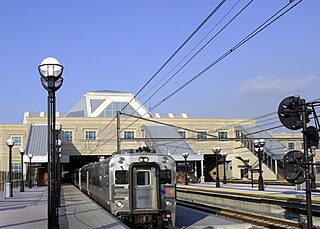
Secaucus is a town in Hudson County, in the U.S. state of New Jersey. As of the 2020 United States census, the town's population was 22,181, an increase of 5,917 (+36.4%) from the 2010 census count of 16,264, which in turn reflected an increase of 333 (+2.1%) from the 15,931 counted in the 2000 census.

A potter's field, paupers' grave or common grave is a place for the burial of unknown, unclaimed or indigent people. "Potter's field" is of Biblical origin, referring to Akeldama, stated to have been purchased after Judas Iscariot's suicide by the chief priests of Jerusalem with the coins that had been paid to Judas for his identification of Jesus. The priests are stated to have acquired it for the burial of strangers, criminals, and the poor, the coins paid to Judas being considered blood money. Prior to Akeldama's use as a burial ground, it had been a site where potters collected high-quality, deeply red clay for the production of ceramics, thus the name potters' field.

Secaucus Junction is an intermodal transit hub operated by New Jersey Transit in Secaucus, New Jersey. It is one of busiest railway stations in North America.

The Main Line is a commuter rail line owned and operated by New Jersey Transit running from Suffern, New York to Hoboken, New Jersey, in the United States. It runs daily commuter service and was once the north–south main line of the Erie Railroad. It is colored yellow on NJ Transit system maps, and its symbol is a water wheel.

The Hoboken Cemetery is located at 5500 Tonnelle Avenue in North Bergen, New Jersey, United States. in the New Durham section. It was owned by the City of Hoboken. The Flower Hill Cemetery borders it on two sides. Although one may have the sense of a well groomed and cared for cemetery when first arriving at the Hoboken Cemetery, just a short walk in any direction and you will find a different story. It is bordered by Flower Hill Cemetery. The Secaucus Junction was built on land that was partially the Hudson County Burial Grounds. The exhumed bodies were to be re-interred at the Hoboken Cemetery but that was cancelled when the cemetery was found to have been recycling older full graves that did not have tombstones, and selling them as virgin plots. The cemetery said it has no record of any bodies being buried in those plots.
Maple Grove Park Cemetery is located in Hackensack, New Jersey. It is operated by the Maple Grove Park Cemetery Association, at 535 Hudson Street in Hackensack. In 2004–2005 it received the remains of bodies removed from the Hudson County Burial Grounds in Secaucus, New Jersey. The plaque for the Hudson County arrivals reads: "In 2003, the remains of 4,569 of these individuals were removed from the Potter’s Field and brought to this spot to be honored and remembered. May this site serve in perpetuity as their final resting place and a sanctuary of peace."

Snake Hill is an igneous rock intrusion jutting up from the floor of the Meadowlands in southern Secaucus, New Jersey, at a bend in the Hackensack River. It was largely obliterated in the 1960s by quarrying that reduced the height of some sections by one-quarter and the area of its base by four fifths. The diabase rock was used as building material in growing areas like Jersey City. The remnant of the hill is the defining feature of Laurel Hill County Park. The high point, a 203-foot graffiti-covered inselberg rock formation, is a familiar landmark to travelers on the New Jersey Turnpike's Eastern Spur, which skirts the hill's southern edge. The crest of the hill's unusual, sloping ridge is about 150 feet high.

Croxton is a section of Jersey City in the New Jersey Meadowlands in Hudson County, in the U.S. state of New Jersey.
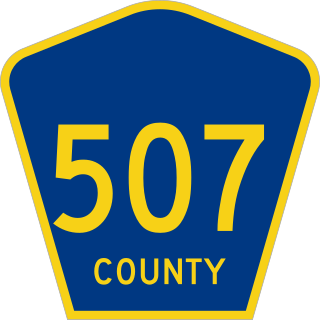
County Route 507 is a county highway in the U.S. state of New Jersey. The highway extends 28.37 mi (45.66 km) from Harrison Avenue on the Kearny-Harrison town line to the New York state line in Mahwah. Between Ho-Ho-Kus and Mahwah, this highway is known as Franklin Turnpike. At its northern terminus, County Route 507 continues north into New York as Orange Avenue, which is a portion of U.S. Route 202 (US 202).
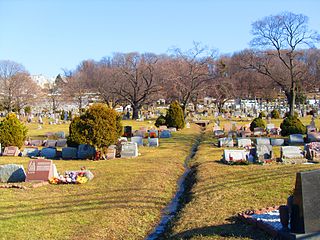
The Weehawken Cemetery, like neighboring Hoboken Cemetery, is not located in its namesake town of Weehawken but rather on the western slope of the Hudson Palisades in North Bergen, New Jersey, with its main entrance on Bergen Turnpike. At its east side the cemetery is overlooked by the Bergen Crest Mausoleum and the Garden State Crematory. and nearby Flower Hill Cemetery.
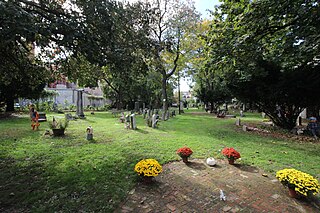
Old Bergen's Speer Cemetery is located at 145 Vroom St in the Bergen Square neighborhood of Jersey City, New Jersey, between Bergen Ave. and Van Reypen St.

The Grove Church Cemetery is a nonsectarian cemetery, located on the western slope of the Hudson Palisades, along with several other cemeteries in a string of green open space, in Hudson County, New Jersey, United States. The Grove Church, who owns the cemetery, is one of the oldest religious bodies in the area, and it has had an operating cemetery since 1847. Throughout its history, prominent families have been buried there, as well as American Civil war veterans. There have also been reports of vandalism and misuse of the property since the 19th century, and in 2007 some of the cemetery grounds were occupied by the homeless.

The Machpelah Cemetery, also spelled as "Macpelah Cemetery", or "Macphelah Cemetery", is a cemetery in Hudson County, New Jersey.

The Abel I. Smith Burial Ground was a family burial plot in Hudson County, New Jersey, United States.
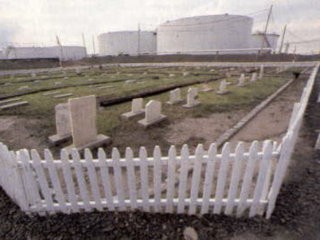
Constable Hook Cemetery is the name used to refer to two cemeteries on Constable Hook in Bayonne, New Jersey, the extant Bayonne Constable Hook Cemetery and the no longer existing Van Buskerck Family Burial Ground. Both were founded by members of the van Buskirk family, descendants of the cape's first settler, Pieter Van Buskirk. In 1906 the Standard Oil Company purchased the family land to expand their refinery, already the largest in the world at the time. Myths and historical inaccuracies have led to confusion about the two burial grounds.
Meadowview Psychiatric Hospital is a hospital in Secaucus, New Jersey.

Leonardo Andriani was an Italian longshoreman and immigrant born in Molfetta, Italy. The search for his remains led to one of the largest disinterments in United States history.















